Travel & Outdoors
A Long Weekend in Pittsburgh Made Us Forget All About That Other Football Team
No matter your feelings regarding the Steelers—it’s a city that’s impossible not to fall in love with.
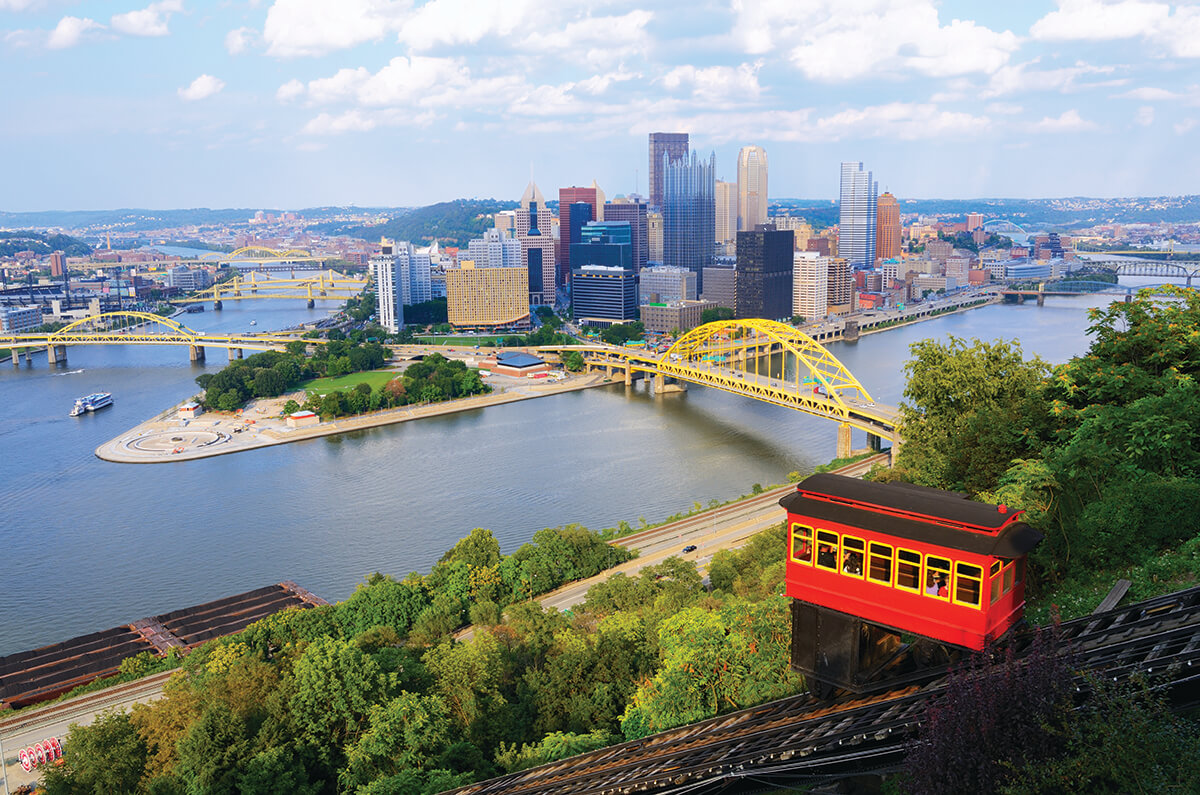
There was an audible groan in our family when it was announced we’d be spending spring break not on a tropical beach but in Pittsburgh, a place I’d been meaning to visit for years. And I’ll admit that, as we arrived on an April morning to a blustery snowstorm, I had a momentary fear I’d led my family astray.
But the thing about Pittsburgh is—no matter what your feelings are regarding the Steelers (more on that later)—it’s a city that’s impossible not to fall in love with.
Located in western Pennsylvania at the junction of three rivers, Pittsburgh is a relatively easy four and a half hours from Baltimore. We stretched our legs at The Coffee Pot in Bedford, Pennsylvania, along the Lincoln Highway. This roadside gem is 18 feet tall and 22 feet in diameter, making it just big enough to hold approximately 800,000 cups of coffee, according to the Uncovering PA website. It was originally built in 1927 by David Koontz, a local gas station owner, as a small restaurant. It’s also been a bar and a bus stop, but now it merely exists as an excuse to get out of the car for five minutes and snap a few pictures.
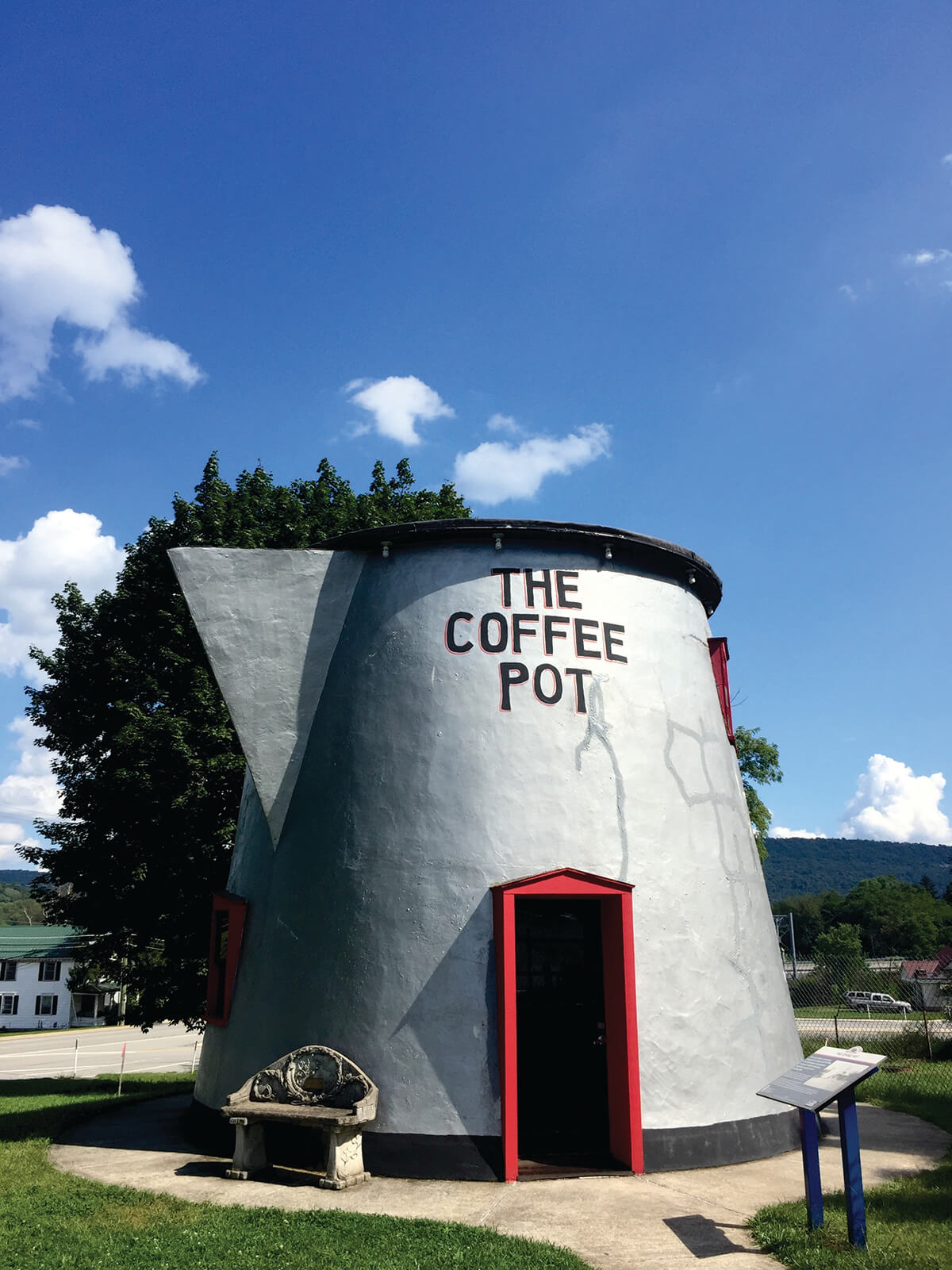
But back to Pittsburgh. For years, this city has lived in the mind of Baltimore Ravens fans as the home of Ben Roethlisberger and Heinz Stadium. Neither exist anymore. “Big Ben” retired earlier this year and Heinz Stadium was recently renamed Acrisure Stadium, after an insurance company with big pockets. (Steelers fans don’t like it either.) But I’m here to tell you an entire world exists in Pittsburgh beyond its stadium, located in the North Shore neighborhood right where the Ohio, Allegheny, and Monongahela rivers meet.
We spent our days eating, sightseeing, and shopping. There’s a ton of hotel options to choose from. We stayed at a major chain downtown—which I picked because of its central location. Next time I will stay in one of the more charming neighborhoods, like Lawrenceville or the Strip District. We drove our car everywhere but there are bike rental options, decent public transportation via buses, and all sorts of rideshare services. It’s hard to say what endeared me so much to Pittsburgh. Maybe it’s all the bridges and hills, including the steepest street in a U.S. city (yes, including San Francisco). More likely, it’s the fact that, with its distinct neighborhoods and striking architecture, it felt like a cousin of Baltimore.
Besides, how can a city that claims ownership of both ketchup and Mister Rogers be bad?
► DO & SEE
The first must-do in Pittsburgh is The Andy Warhol Museum, the largest museum in North America dedicated to a single artist. The museum, which has timed entries so plan ahead, holds an extensive permanent collection of art and archives from the Pittsburgh-born pop art icon. We spent a solid three hours exploring the seven floors that include 900 paintings, 4,000 photographs, and nearly 2,000 works on paper. Highlights included photographs of Warhol as a tow-headed young boy, his self-published book of cats, his Miss Dior window display for Bonwit Teller in New York, early illustrations for the I. Miller shoe company, his “Cowboy Elvis” silkscreen printing, and, of course, his famous soup cans and portraits of Jackie Kennedy, Muhammad Ali, Marilyn Monroe, and himself.
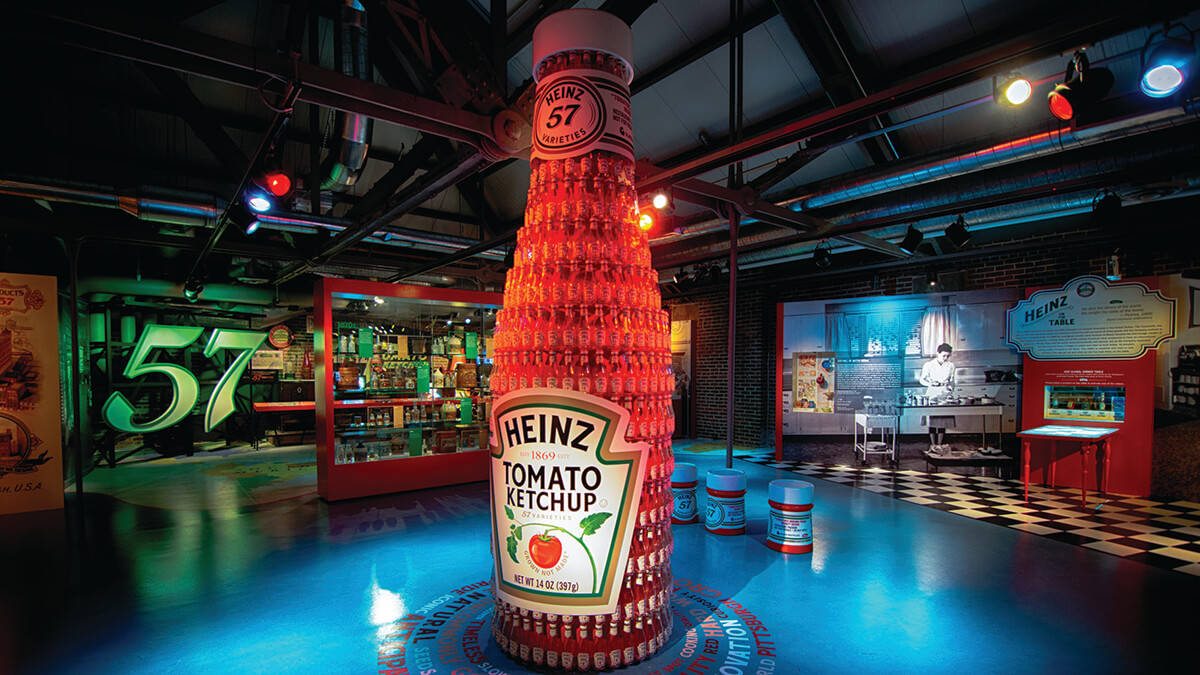
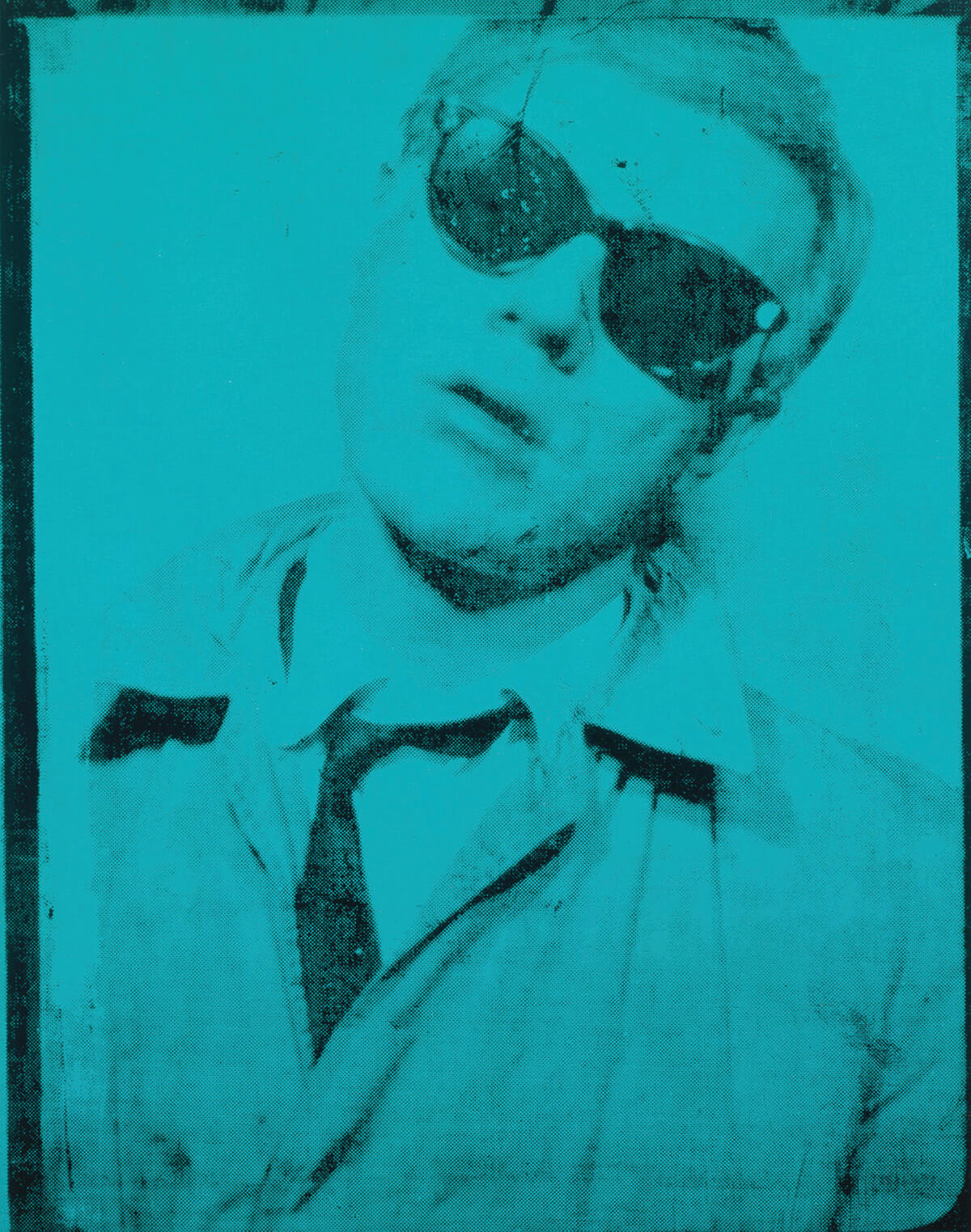
Another don’t-miss spot was the Heinz History Center (which elicited more groans from the children—“History? It’s vacation!”—but ended up being a favorite stop). The century-old, Smithsonian-affiliated center, housed in what was once the Chautauqua Lake Ice Company building, is named for John Heinz, the U.S. senator from Pennsylvania who died in a plane crash in 1991. The center’s mission is to showcase Western Pennsylvania’s history from past to present to future. That includes a “How Pittsburgh Changed the World” exhibit that embraces everything from Jonas Salk’s discovery of the polio vaccine to the invention of the Big Mac. (It was introduced in the Greater Pittsburgh area in 1967 and nationwide in 1968.)
There’s also a Western Pennsylvania Sports Museum. (Trigger warning: There’s a whole lot of Steelers and Pirates stuff.) Our two favorite exhibits were the history of the H.J. Heinz Company, including an 11-foot ketchup bottle and video loops of vintage Heinz TV ads from around the world and “The Special Collections Gallery” that holds artifacts from Mister Rogers’ Neighborhood.
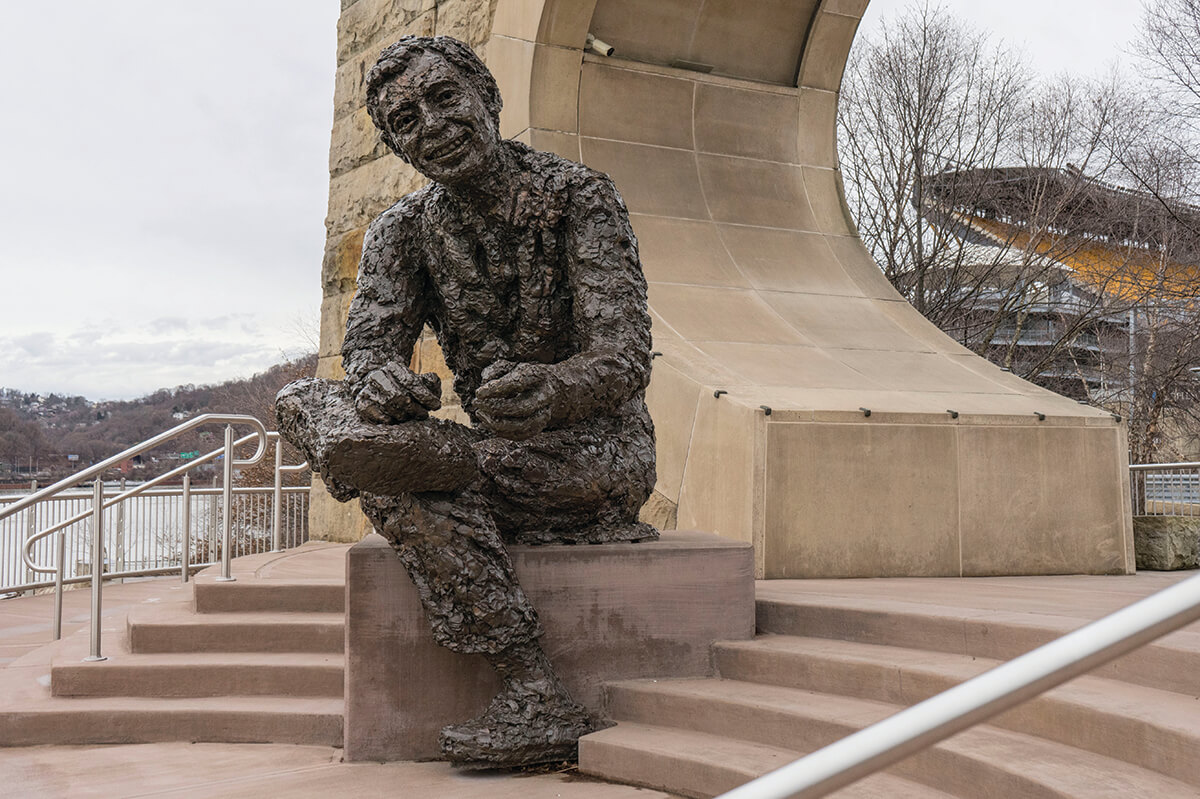
There’s the entryway and living room set of Mister Rogers’ home, the Great Oak Tree where Henrietta Pussycat and X the Owl resided, King Friday XIII’s castle, McFeely’s “Speedy Delivery” tricycle, the bench that Mister Rogers sat on during each show, and, of course, his iconic cardigan sweater. We also visited the Mister Rogers bronze sculpture that resides along the North Shore (near the stadium). Officially called “Tribute to Children,” it sits over 10 feet tall and shows the beloved figure tying his shoes as he would at the start of each episode while singing “Won’t You Be My Neighbor.”
It’s best to wait for a beautiful clear day, like we did, to visit the Duquesne Incline, a funicular located near Pittsburgh’s South Side. (A funicular is a cable railroad, usually on a mountainside, in which ascending and descending cars are counterbalanced.) This one, which scales Mt. Washington, was designed by Hungarian-American engineer Samuel Diescher and completed in 1877. The bright red Duquesne Incline, one of the few remaining in the country, was lovingly restored by locals in 1963 and maintains its wooden cable car feel with elegant tin ceilings and stunning views of the city skyline. One thing to remember: Make sure you have exact fare upon arrival. There is no change, no online reservations, and no credit cards or debit cards are accepted.
From the top of Mt. Washington, you get a great view of the Three Sisters self-anchored suspension bridges spanning the Allegheny River at 6th, 7th, and 9th streets. The bridges have been given formal names to honor important Pittsburgh residents: Roberto Clemente, Andy Warhol, and Rachel Carson. Designed by the Allegheny County Department of Public Works, they were all built by the American Bridge Company from 1924 to 1928. The Three Sisters are the only trio of nearly identical bridges, as well as the first self-anchored suspension spans, built in the United States.
Back in 2001, when the downtown area bridges were due for maintenance, the Pittsburgh History & Landmarks Foundation suggested a fresh color instead of the standard Aztec Gold, according to the Pittsburgh City Paper. Among the colors proposed were perfect peach and purple ice. “Not everyone was happy with the proposals,” wrote Chris Potter. “Tom Sokolowski, who as head of The Andy Warhol Museum is sort of the city-planning equivalent to Joan Rivers at the Oscars, groused that bridges ‘are not bath towels.’ And if the PH&LF’s Arthur Ziegler was so interested in redecorating, Sokolowski was quoted saying in The Post-Gazette, ‘Why doesn’t he go and work for IKEA?’” The bridges remain Aztec Gold.
“BESIDES, HOW CAN A CITY THAT CLAIMS OWNERSHIP OF BOTH KETCHUP AND MISTER ROGERS BE BAD?”
We spent our last day in Pittsburgh visiting the Mattress Factory, a contemporary art museum in the city’s Northside neighborhood. In 1975, artist and Mattress Factory founder Barbara Luderowski purchased a former Stearns & Foster mattress warehouse—hence the name. The museum now includes several buildings around the neighborhood and a garden plot where we met a very friendly cat. Favorite installations included Yayoi Kusama’s Infinity Dots Mirrored Room and Jennifer Angus’s “The Museum of All Things”—an entire room dedicated to Victorian furnishings, taxidermy, and insects.
If you look up from pretty much anywhere in the city, you’ll see the University of Pittsburgh’s Cathedral of Learning. Tucked inside is the Nationality Rooms, a group of 31 classrooms depicting and donated by the national and ethnic groups that helped build the city. Other places not to miss include the beautiful art tribute in front of the Tree of Life Congregation, where 11 people were murdered inside their synagogue in October 2018. A total of 101 pieces of artwork submitted from around the world were chosen to appear on the block-long canvas. There’s also the Carnegie Museum of Art, with its impressive Hall of Architecture; the Carnegie Museum of Natural History, which includes the world’s first specimen of a Tyrannosaurus Rex; and the Carnegie Science Center, with its four levels of interactive exhibits and an impressive planetarium show. Also, don’t miss the Phipps Conservatory and Botanical Gardens, a stunning botanical garden in Schenley Park; the National Aviary, the country’s largest aviary with over 500 different types of birds; and Point State Park, a 36-acre park downtown with great views.
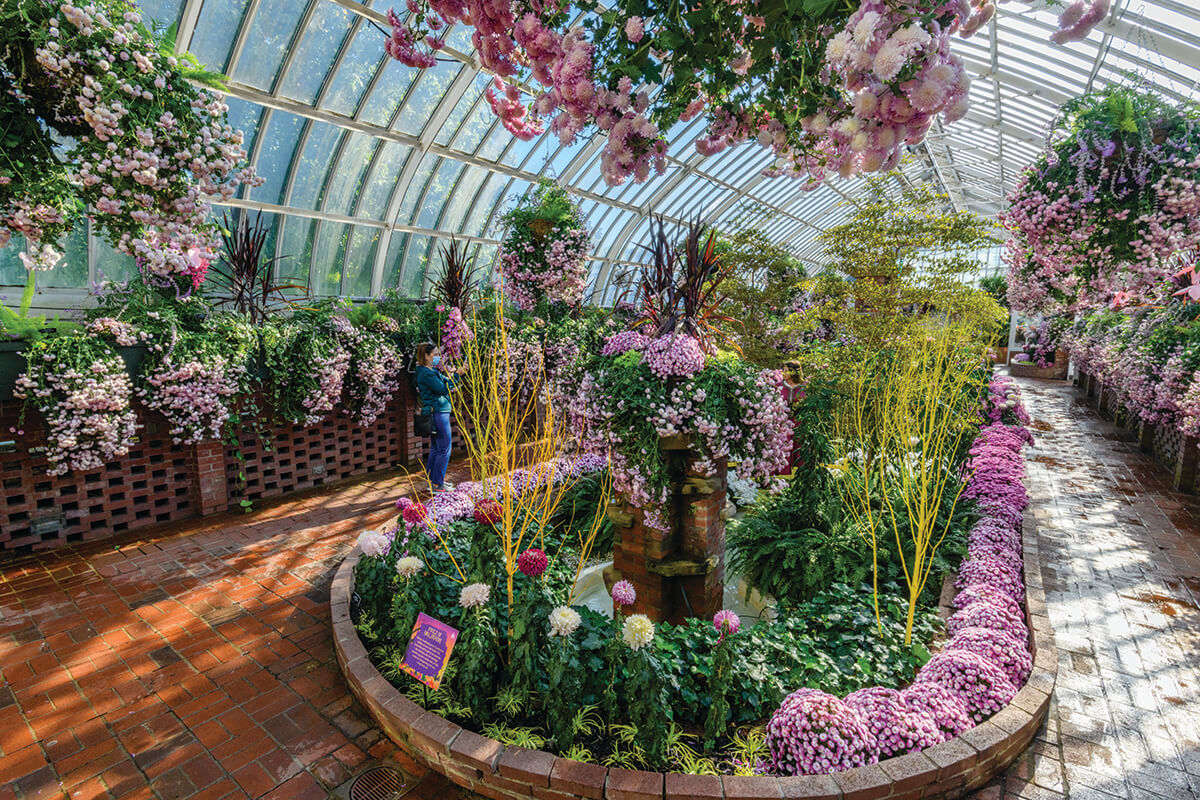
► EAT
Since our trip was family-focused we didn’t do much fine dining. (Though there is plenty of that.) Instead, we stuck with kid faves: noodles, pasta, sandwiches, pizza, and sweets. Our very first meal was in Squirrel Hill at Everyday Noodles for pork bao buns, bok choy, soup dumplings, dan dan noodles, and braised beef noodle soup. We ordered way too much and ate every single bite. And right up the street is Gaby Et Jules, a fancy bakery with macarons, eclairs, and tarts.
“One of the coolest parts of Pittsburgh is that every corner has a church and a bar,” said a friend who attended college there. “Love seeing them in the same place.” She was referring to the often-recommended Church Brew Works in Lawrenceville—one of our favorite neighborhoods—located in a turn-of-the-century church now turned brewery. We ate pierogies with sautéed onions and sour cream and a traditional Pittsburgh-style salad with grilled chicken, mixed greens, red onions, Monterey Jack cheese, and fries (served on the salad) washed down with a few beers. (The kids had handcrafted birch beer.)
Also, in Lawrenceville is La Gourmandine bakery and pastry shop. There will be a line out the door, there will be lots of dogs to pet, and it will be worth the wait. The flaky pain au chocolat and abricotine with vanilla cream and apricot filling are ridiculously good. You can’t go to Pittsburgh and not hit Pamela’s Diner for her famous hotcakes. These oversized, buttery, crepe-style cakes with crispy edges—served with syrup or stuffed with fresh fruit, sour cream, brown sugar and topped with whipped cream—must be eaten with Pamela’s Lyonnaise potatoes. There’s the Pittsburgh Hash version with kielbasa, sauerkraut, and Swiss, or Pam’s Trash Hash with sloppy Joes, jalapeño, bacon, and American cheese. Go early or expect a wait and, like many of the greatest things in Pittsburgh—it’s cash only. Another can’t miss in the Strip District is Grandpa Joe’s Candy Shop, with 250 different kinds of candy bars, over 100 bulk candies, lots of brightly colored soda pop, and a chance to be a hero when you hand your kids a bag and say, “Fill it up.”
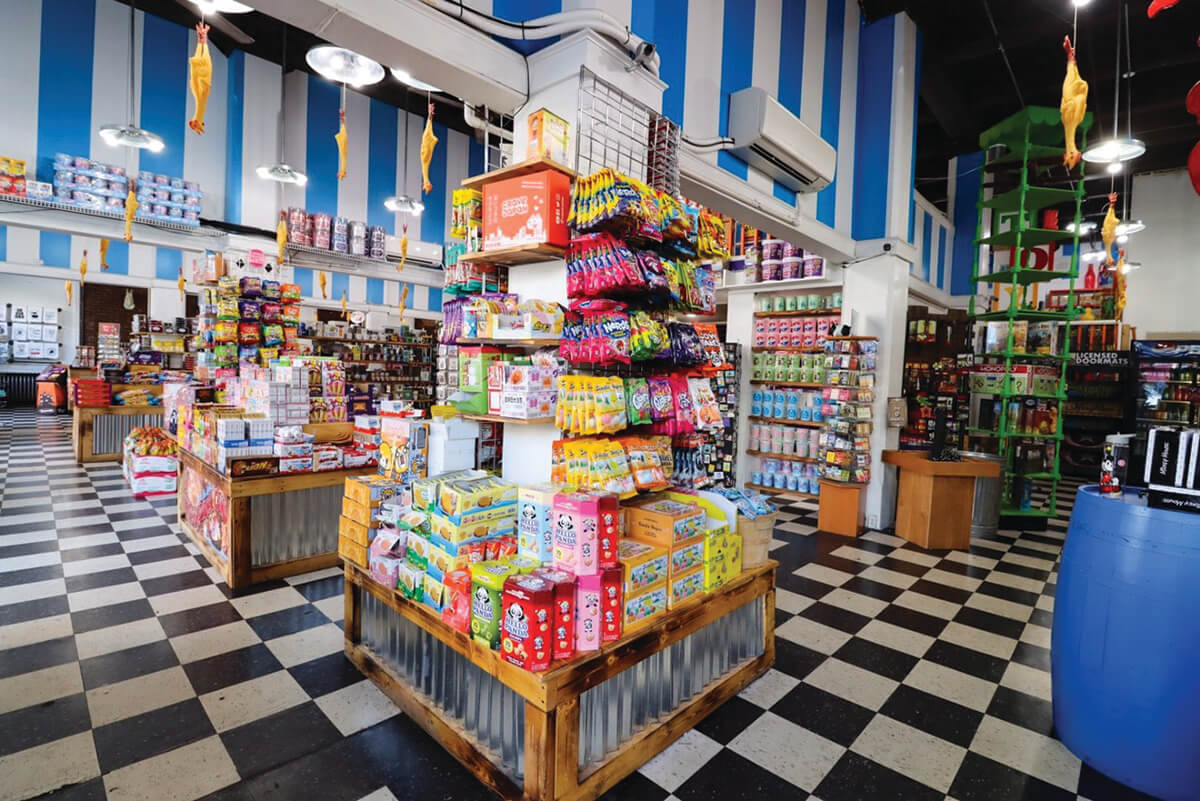
Then there’s the original Primanti Bros. It felt like something we had to do, like eating crabs in Baltimore. Joe Primanti operated a sandwich cart in the Strip District in 1933. Business was good and he opened his first storefront there that same year. What makes a classic Primanti Bros. sandwich is Italian white bread loaded with meat, melted provolone, tomatoes, fresh-cut fries and coleslaw—stacked high. People either love it or hate it. We landed somewhere in the middle. It was messy, complicated, and really tasty. I dig the Pittsburgh initiative of putting fries on everything.
There’s also Beto’s Pizza, which has been around for 65 years. Pizzas are all made to order and sold by the “individual cut”—not whole pie. They’re definitely unique: They come out of the oven with a traditional crust, hot bubbly cheese, special sauce, but then fresh, cold provolone cheese is put on top—plus whatever else you order. Cold toppings on a pizza are weird but also intriguing. The cold cheese melts a little while you eat. The pepperoni and banana peppers do not. Other favorites include Pigeon Bagels, conveniently located near the Frick Park Blue Slide Playground—which houses a really long blue slide. Redhawk, a small Pittsburgh-based roastery, Meat & Potatoes gastropub, Threadbare Cider House in Spring Garden, DiFiore’s Ice Cream Delite, Bae Bae’s Kitchen for casual Korean, and Tocayo for Mexican in Shadyside, another fantastic neighborhood, are also great options.
► SHOP
There are so many wonderful neighborhoods to explore in Pittsburgh, each with its own set of boutiques, coffee shops, and bookstores. Our favorites included the Strip District (Roxanne’s Dried Flowers, City Grows), Lawrenceville (Wildcard, Pavement, Boheme Pittsburgh, Toll Gate Revival), Squirrel Hill (Amazing Books and Records, Little Shoes, Jerry’s Records), and Southside (Highway Robbery Vintage, Indigo Owl Culture Shop, Three Rivers Vintage). New shops are always popping up and our favorite thing when exploring a new city is walk, walk, walk.
A friend who grew up in the Burgh told me before the trip, “You won’t believe how beautiful Pittsburgh is,” and she was right. Pittsburgh even beats out Venice, Italy, for the city with the most bridges—with over 400. To extend our trip a little longer we stopped at Fallingwater on our way home (it’s about 70 miles southeast from Pittsburgh). It’s a home designed in 1935 by the architect Frank Lloyd Wright in the Laurel Highlands and built partly over a waterfall. It’s divine and dreamy—a recommended detour.
But if you leave Pittsburgh after a long busy weekend and simply drive straight back home, chomping on a Prantl’s burnt almond torte, it still will have been completely worth it.